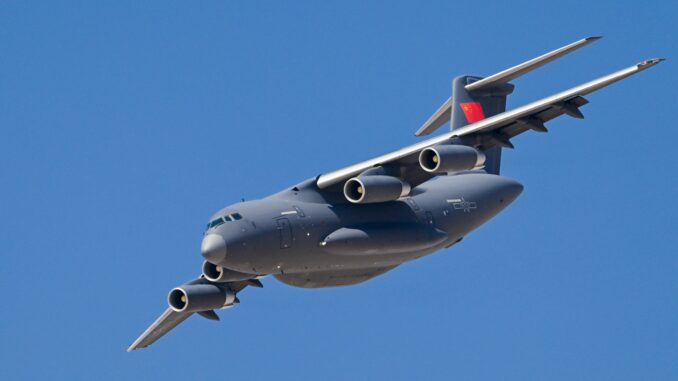
An unprecedented joint air exercise between China and Egypt has been launched under the title “Civilization Eagle 2025”, signalling a notable shift in regional military dynamics.
Initiated in mid-April and continuing into early May, the operation has involved the deployment of China’s PLA Air Force to Egypt, including the strategic Y-20 Kunpeng transport aircraft. Although details about the specific aircraft and flight operations remain limited, the manoeuvres have been framed by Beijing as a move to enhance mutual trust and interoperability. The Y-20’s presence has underscored China’s growing capacity to project power far from its borders, while Egypt’s participation has reflected its intention to diversify its military partnerships amid strained relations with the U.S.
Emphasis has been placed on the capabilities brought to the exercise by both nations. Egypt’s varied fleet, incorporating American F-16s, French Rafales, and Russian MiG-29s, has demonstrated Cairo’s long-standing strategy of balancing defence ties. Meanwhile, China’s use of the Y-20, a cornerstone of its modern logistics force, has reflected ambitions to support sustained overseas operations. Though unconfirmed, the possible inclusion of advanced Chinese aircraft such as the J-10C has raised questions about the potential for future arms deals. The joint training has thus been perceived as both a tactical collaboration and a strategic overture, hinting at broader defence and technological engagement between the two powers.
Broader geopolitical consequences have been anticipated as a result of this cooperation. Concerns have been stirred in Washington and Tel Aviv over shifting alignments, particularly as the Middle East continues to serve as a key battleground in the evolving U.S.-China rivalry. Egypt’s pivotal location and control of the Suez Canal have added to the significance of the drills, especially in the context of China’s Belt and Road Initiative. While official responses from regional actors have remained muted, the exercise has been widely interpreted as a signal of Egypt’s increasing foreign policy autonomy and China’s resolve to establish a stronger foothold in a region traditionally influenced by Western powers.
